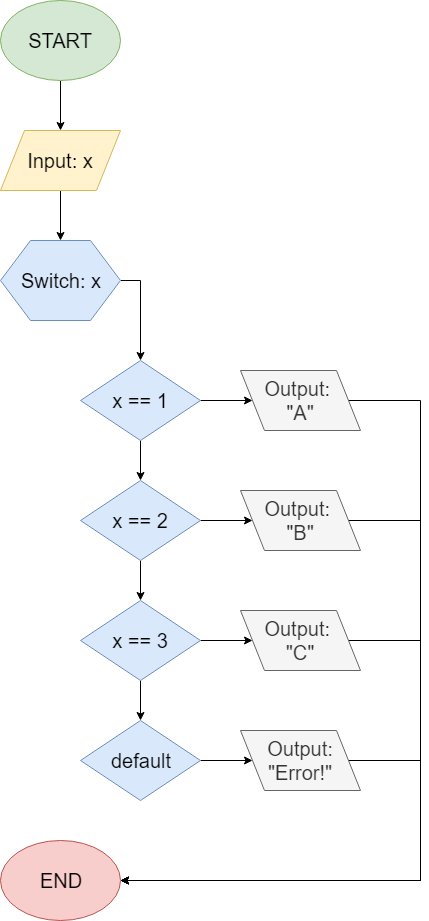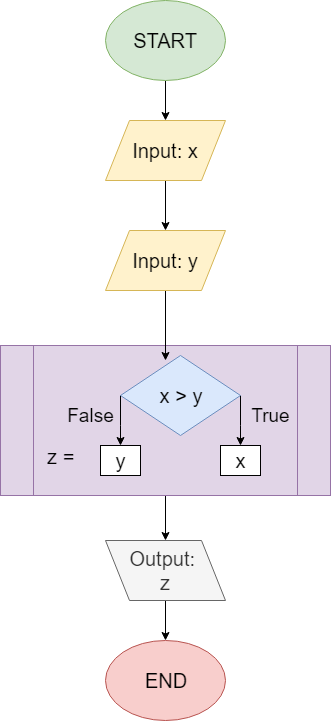Other Branching Statements
Many programming languages also provide other conditional constructs that perform these same operations in different ways. However, each of these constructs can also be built using just if and if-else statements, so it is not necessary to use these constructs themselves to achieve the desired result. In many cases, they are simply provided as a convenience to the programmer in order to make the code simpler or easier to understand.
Switch
Some programming languages, such as C and Java, include a special type of conditional construct known as a switch statement, sometimes referred to as a case statement. Instead of using a Boolean value, which can only be true or false, a switch statement allows our program to choose a block of code to execute based on the many possible values of a variable, traditionally an integer value.
This flowchart shows what a switch statement might look like in a program:
In this example, the program will examine the value of the variable x and use it to choose a case, which is a code block that would be executed. Here, it would simply output a different response, depending on the value of x. Notice that the flowchart is essentially using several if statements to accomplish this task, which is essentially what the computer would do when executing this program. In addition, the program includes a special default case, which is executed if the value of x does not match any of the other cases.
In code, a Switch Statement may have this general structure:
switch <variable>:
case <value 1>: <code block 1>
case <value 2>: <code block 2>
case <value 3>: <code block 3>
...
default: <default code block>Depending on the programming language used, it is possible to execute multiple code blocks inside a switch statement, so we may need to consult the documentation for our chosen programming language to understand how these statements work.
Ternary Conditional Operator
Many programming languages also include a special operator, known as a ternary conditional operator, sometimes referred to simply as a ternary operator, that is effectively a shortcut for a simple if-else statement that produces a single value. Here’s a flowchart showing an example:
In this example, the program accepts two variables, x and y, as input. Then, it will set the value of a third variable, z, to the maximum value of x and y. It does so by testing if x > y. If so, it will set z = x; otherwise it will set z = y.
In general, there are two different ways that this operator is implemented. In Java and other programming languages similar to C, it looks like this example:
<variable> = <boolean expression> ? <true expression> : <false expression>In Python, the ternary conditional operator looks just a bit different:
<variable> = <true expression> if <boolean expression> else <false expression>The appropriate use of the ternary operator is hotly debated. If it is used, it should be used to make reading the code more clear. The code a = a if a > 0 else -a can be understood to find the absolute value of a.
Some monstrosity like a = foo(b) >= bar (c) ? f(b>c?2.0 * c:b+1) : g(c)!=1 ? ++c:c+1; is better written in if-else statements.
We suggest that if you use the ternary operator, be very judicious in its application. You may want to read the article in Agile Software Craftsmanship for more discussion.
Remember the goal is readable, understandable code, not diabolically clever code.

